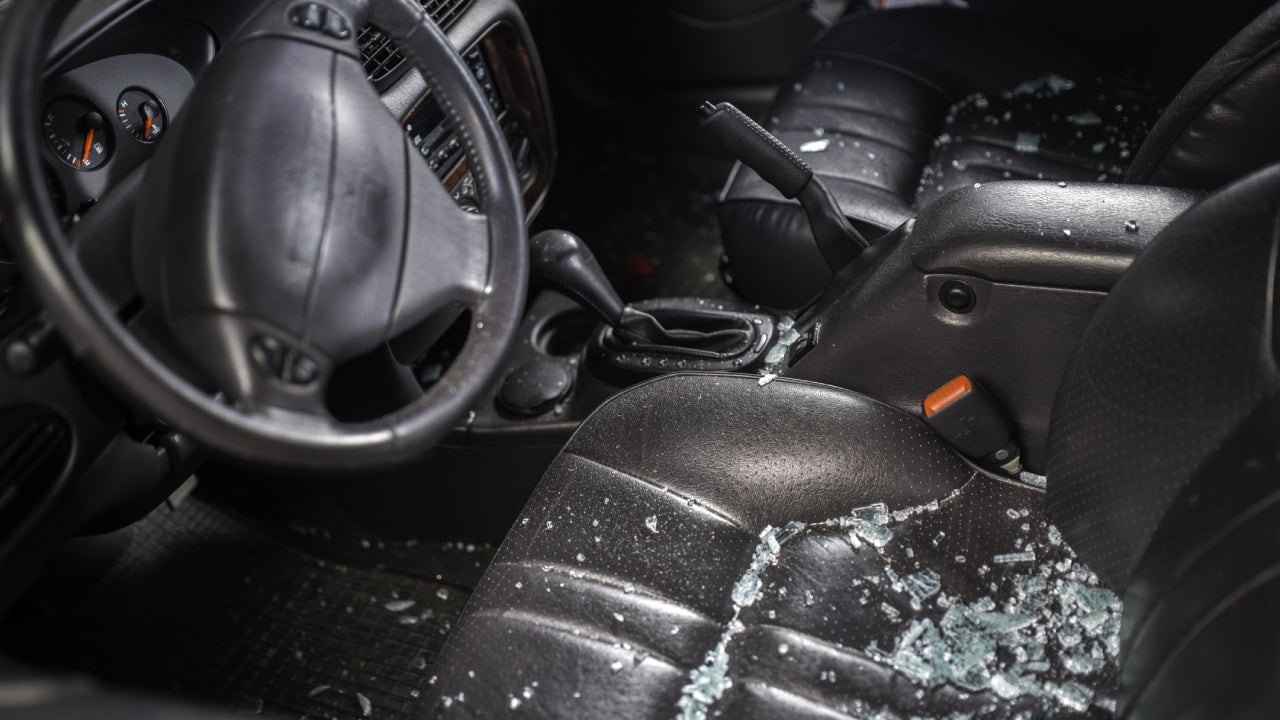Trick or treat: How your home and auto policies protect you from vandalism and other pranks

The scariest things during Halloween aren’t gory costumes or the prospect of getting a toothbrush in your trick-or-treat bag — it’s the uptick in crime. The night before Halloween is colloquially known as “devil’s night” or “mischief night” (and even “cabbage night”), and its origins date back to 18th century Britain.
As its various nicknames imply (save for “cabbage night”), Halloween eve is when all kinds of hijinks ensue: some are harmless fun, while others can have more serious financial implications. When you understand better how your home and auto policies protect you, you can help keep your Halloween frights the good kind of scary — not the kind that leaves you paying buckets of money out of pocket.
Halloween and crime
A 2016 Travelers Insurance report found 24 percent more property crime-related claims on Halloween than on the average day. This includes theft from inside and outside of the home and vandalism. A 2023 report from CPI Security Systems supports this, finding that break-ins increased in October by 21 percent on average.
Why this happens isn’t exactly clear. Night falls earlier in October, which could give thieves and pranksters more time under the cover of darkness. Halloween masks are another likely culprit; it’s probably the only day of the year when wearing a mask out and about won’t arouse suspicion.
It’s not just homes and belongings that are at risk. Data from the National Insurance Crime Bureau shows that, during the five-year period from 2011 to 2015, vehicle thefts were higher than the daily average for four of those years. In 2015, more vehicles were reported stolen on Halloween than on any other holiday, including New Year’s Eve.
How does vandalism insurance work?
Insurance is designed to help you with the unexpected and the unpredictable, like a home break-in or graffiti tag. With an HO-3 (the most common type of home insurance policy) and an HO-5 (another popular insurance form), your home’s physical structure and the other structures on your property (like a garden shed) are protected on an open-peril basis. This means you are financially protected from every kind of loss imaginable — theft and vandalism included — except those specifically excluded from your policy. With the HO-5, your personal property is also protected on an open-peril basis. But, with an HO-3, your belongings are only covered from losses listed in your policy. These typically include theft, vandalism and malicious mischief.
Burglary
Are you covered if a burglar breaks into your home on Halloween night? The short answer is yes, on Halloween and any other night. Your home insurance policy will likely cover the loss of the items themselves and the damage the burglars caused. If a burglar smashes a few windows to enter your home, your home insurance company will also help with the cost of repairing those windows.
Vandalism and malicious mischief
Vandalism is usually grouped with malicious mischief in an insurance policy. Here’s what those two terms mean in the context of homeowners coverage:
- Vandalism: Intentional property damage without the consent of the property owner.
- Malicious mischief: Intentional property damage out of revenge, hatred or spite.
Vandalism and malicious mischief can take several forms, including graffiti, arson, destroyed landscaping, smashed windows, stolen mailboxes, etc. Keep in mind that you’re only covered for the damage caused by someone else. For instance, if you or another member of your household spray paints your home to give it a little extra Halloween pizazz, you can’t file a claim for a new paint job.
You also may be unable to file a claim for vandalism or malicious mischief if your property has been vacant for more than 30 or 60 consecutive days. On a home insurance policy, “vacant” means that a property doesn’t have people or furniture, while “unoccupied” means it has belongings but no people. If you plan to vacate your property for an extended period, carefully read your home insurance policy to see if you’re covered for vandalism.
How to file a vandalism claim
With filing a home insurance claim, acting fast and documenting everything are key. Here’s the step-by-step on what to do:
- File a police report. If your home was vandalized or burglarized, you’ll likely need a police report for your home insurance claim.
- Take photos. Be sure to thoroughly document the damage, especially after a forced entry.
- Contact your insurance provider. Follow your insurance company’s claims process, whether that means starting the process online, through a mobile app, calling a Hotline or visiting an office in person.
- Adhere to the duties after loss. Your home insurance policy will lay out what the homeowner is responsible for doing to help prevent future claims. For example, if a burglar smashed a window, you may be responsible for boarding it up temporarily. If you go out to buy supplies for temporary repairs, you’ll likely be reimbursed as part of your home insurance claim.
Does car insurance cover vandalism?
If your car insurance policy includes comprehensive coverage, you can file a claim for vandalism damage. Comprehensive coverage, also sometimes called “other-than-collision” coverage, can financially protect you from a broad number of losses, such as:
- Vehicle theft
- Hitting an animal
- Vandalism
- Riots
- Windshield and glass breakage
- Fire
- Weather-related damage
- Floods
- Falling objects
Remember, you’re still financially responsible for your deductible. Depending on your state, your policy may include no-deductible glass coverage. Florida, Kentucky and South Carolina follow zero-deductible glass repair car insurance laws.
Frequently asked questions
Why we ask for feedback Your feedback helps us improve our content and services. It takes less than a minute to complete.
Your responses are anonymous and will only be used for improving our website.
You may also like

Is car insurance tax deductible?

Does car insurance cover your parked car?

Does car insurance cover vandalism?



